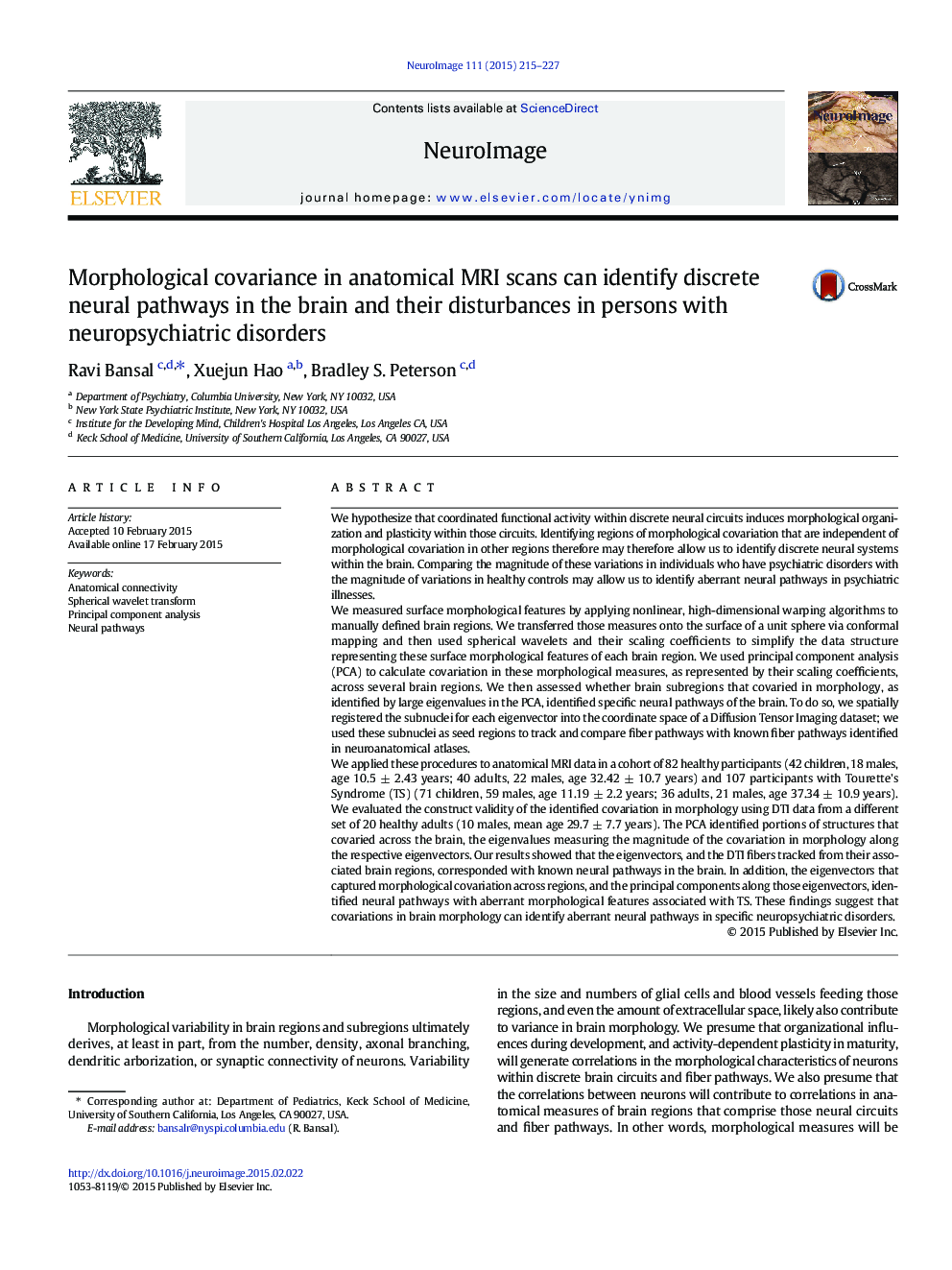| Article ID | Journal | Published Year | Pages | File Type |
|---|---|---|---|---|
| 6025447 | NeuroImage | 2015 | 13 Pages |
Abstract
We applied these procedures to anatomical MRI data in a cohort of 82 healthy participants (42 children, 18 males, age 10.5 ± 2.43 years; 40 adults, 22 males, age 32.42 ± 10.7 years) and 107 participants with Tourette's Syndrome (TS) (71 children, 59 males, age 11.19 ± 2.2 years; 36 adults, 21 males, age 37.34 ± 10.9 years). We evaluated the construct validity of the identified covariation in morphology using DTI data from a different set of 20 healthy adults (10 males, mean age 29.7 ± 7.7 years). The PCA identified portions of structures that covaried across the brain, the eigenvalues measuring the magnitude of the covariation in morphology along the respective eigenvectors. Our results showed that the eigenvectors, and the DTI fibers tracked from their associated brain regions, corresponded with known neural pathways in the brain. In addition, the eigenvectors that captured morphological covariation across regions, and the principal components along those eigenvectors, identified neural pathways with aberrant morphological features associated with TS. These findings suggest that covariations in brain morphology can identify aberrant neural pathways in specific neuropsychiatric disorders.
Related Topics
Life Sciences
Neuroscience
Cognitive Neuroscience
Authors
Ravi Bansal, Xuejun Hao, Bradley S. Peterson,
